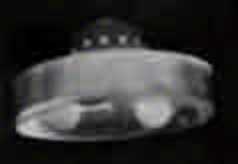E = M C squared is Einsteins theory of relativity which is
actually saying that E which is energy is equal to M
which is mass multiplied times C squared, C being the
speed of light.
Although unproven, this theory is saying that it would
take an emmence amount of energy to move a mass at the
speed of light. By refracturing this formula, we can
say that the speed of light is equal to the square root of
E divided by M.
However light itself is made up of frequencies
which are a ratio of time to a wavelength. Light frequencies are
very high resulting in a very short wavelength.
Time is supposedly a constant, and it is the ratio of
frequency times wavelength. T=FxW
High frequencies have short wavelengths just
as long wavelengths are the basis of low frequencies. Whenever you know a
frequency, you can calculate the wavelength and visa versa. Suppose
you introduce a resonant frequency and modulate the primary frequency,
would the time constant differential equation change the value of time ?
My theory is that a mass of a moving object (a space ship) could be vibrated
at a very low resonant frequency the ratio of which will be the multiplier
times the velocity of light enabling the object to exceed the speed of
light as the time constant will decrease. The reality of this action is
that the low frequency will slow down time.
I shall soon add a page of formulae to validate
these theorumnus. There will also be a drawing of the centrifugal
drive engine. The magnetic motor is found elsewhere.
(click here)
As you read this I am preparing to test a steam powered lead weight whirling magnetic device
which uses centrifugal force to ungravitate and a huge tuning fork to
generate an ultra low resonant frequency.
-----<>-----

